 |
 |
 |
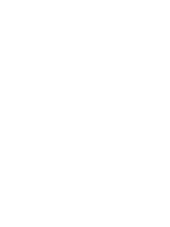
|
Lisa Fonssagrives on the Eiffel Tower photographed by Erwin Blumenfeld for “Vogue France”, May 1939. Dress by Lucien Lelong.
© The Estate of Erwin Blumenfeld
|
|
 |
MUSEO SALVATORE FERRAGAMO
EQUILIBRIUM
17/6/2014-12/4/2015
An exhibition conceived and curated by Stefania Ricci and Sergio Risaliti in collaboration with Emanuele Enria Museo Salvatore Ferragamo Florence, Palazzo Spini Feroni
Organised by: Museo Salvatore Ferragamo in collaboration with Soprintendenza Speciale per il Patrimonio Storico, Artistico ed Etnoantropologico e per il Polo Museale della città di Firenze Fondazione Ferragamo
|

|
Posted 8 October 2014
|
Share this:
|
|
Helping people walk in comfortable shoes and feel happy was Salvatore Ferragamo’s greatest concern. But how could he do this? How could he help feet feel comfortable inside a shoe? How could he support the weight of the human body in motion while locking feet inside a pair of shoes, removed from their natural state, as man was made to walk barefoot? We find Salvatore Ferragamo’s answer to these questions in his autobiography: “When I began studying human anatomy,” wrote Ferragamo.
|
|
|
|
“
I found my first clue to the problem in the distribution of the body weight over the joints of the foot. I discovered the interesting fact that the weight of our bodies when we are standing erect drops Standing, walking, marching, dancing and balancing like a tightrope walker equilibrium straight down on the foot arch. A small area of between one and a half and two inches on each foot carries all our weight. As we walk, the weight of our bodies is swung from one foot to the other.
”
|
|
|
Museo Salvatore Ferragamo’s newest exhibition, Equilibrium, is based upon this premise. The study of the anatomy of the foot, and the arch of the foot in particular, focuses on posture and equilibrium in motion and a deep understanding of the physical and spiritual connection between the parts of the body involved in the act of walking. Once again, Salvatore Ferragamo’s life story is a great source of inspiration and ideas to be developed, suggesting transversal concepts to explore by comparing the different languages of art, fashion, film and literature and distant time periods, following the principle of transversal archaeology that has distinguished past exhibitions like Inspiration and Vision, Marilyn and The Amazing Shoemaker. These exhibitions combined objective data, documents and icons and juxtaposed works of art and exquisitely crafted products, historic creations and significant images of the twentieth and twenty-first centuries. They focused on yesterday’s and today’s leaders of culture and society: Italian and international artists, architects, philosophers, scientists, art historians, poets, writers, designers and directors.
|
|
|
|
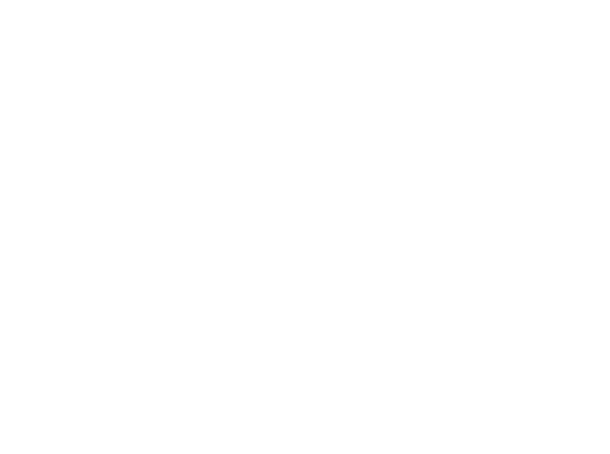
Gjon Mili, Martha Graham, 1943. Photo credit: Gjon Mili/Time Life Pictures/Getty Images
|
|
|
|

|

|

|
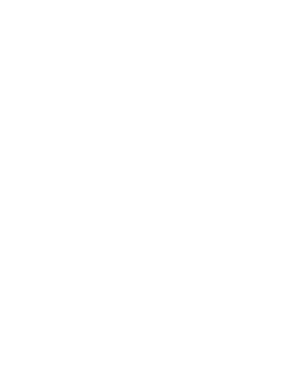
Antony Gormley, Domain LXVIII, 2009. Welded stainless steel poles, 188 x 64 x 29.5 cm. Florence, Private collection. Photo credit: Arrigo Coppitz
|
|
In Museo Salvatore Ferragamo’s new exhibition, visitors will discover the ties between Salvatore Ferragamo’s research and the fields of science, art, architecture, archaeology, circus and dance. They may admire a series of artistic masterpieces, exceptional loans from the world’s most prestigious museums, like The State Hermitage Museumin Saint Petersburg, the Uffizi Gallery in Florence, Museo dei Fori Imperiali – Mercati di Traiano and Museo di Scultura Antica Giovanni Barracco in Rome, in addition to Museo Archeologico in Florence, Galleria d’Arte Moderna di Palazzo Pitti in Florence, Musei Civici in Pavia, Museo Nacional Centro de Arte Reina Sofía in Madrid and Musée d’Orsay, Musée Rodin and Musée Bourdelle in Paris, Museo Marino Marini in Florence, Museo di Palazzo Pretorio in Prato, Museo e Gipsoteca Antonio Canova in Possagno, Musée des Beaux-Arts in Nantes and Museo della Civiltà Romana in Rome, Walker Art Center in Minneapolis, as well as other institutions like the Biblioteca Nazionale Centrale in Florence, foundations, galleries and private collections, generous lenders without which the exhibition would not be scientifically complete.
|
|
|
|
|

|

|

|
Art works by Auguste Rodin, Edgar Degas, Adriano Cecioni and Antoine Bourdelle, along with pieces by Henri Matisse, Pablo Picasso, Fernand
Léger, Paul Klee and Alexander Calder, Gino Severini and Marino Marini, Fausto Melotti and Giulio Paolini, together with Bruce Nauman, George Segal, Bill Viola and Marina Abramovic´, will be displayed alongside extraordinary archaeological findings like the Nike’s Foot in gilt bronze, dating back to Roman times and found in the Forum of Augustus, and the Relief of Dancing Maenads, from Museo di Scultura Antica Giovanni Barracco, compared with paintings by Antonio Canova and drawings
by Plinio Nomellini, Alessandro Allori’s dancing skeletons and Eadweard Muybridge’s photographs. Completing the exhibition, a video by Francesco Fei in collaboration with Emanuele Enria features interviews with Wanda Ferragamo, James Ferragamo, Philippe Petit, Reinhold Messner, Eleonora Abbagnato, Will Self and Cecil Balmond, in which figures of international renown explain the fundamental concepts of this exhibition from their own perspective and in the framework of their personal life experiences, artistic endeavours and professions.
|
|
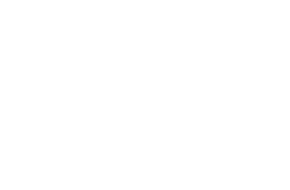
Marina Abramovic´ and Ulay, The Lovers, The Great Wall Walk, 1988/2010. Two-channel colour video, 16 min 45 sec. Based on the performance 90 Days, the Great Wall of China, 1988. Courtesy of the Marina Abramovic´ Archives and Murray Grigor
|
|
|
|
|
|
The exhibition explores the theme of equilibrium, what to walk means, the function of the arch of the foot and the relationship between the foot and the mind, the horizontal and vertical, walking and dancing, posture and the vertiginous void, scaling a mountain and discovering oneself, lightness and fatigue, a walk and a landscape, travelling by foot and the town or city. These themes are examined in interviews, artwork, handmade objects, priceless volumes, like the first editions of Dante’s Divine Comedy and the anatomical essays of Andrea Vesalio and Jean-Jacques Manget.
Another section of the exhibition is devoted to the phenomenology of walking. Exemplary walks will be shown in a spectacular setting: from the steps of royalty (Queen Elisabeth II of England) and those of world leaders (Mao Tse Tung, John F. Kennedy and Fidel Castro), to comedic walks (Charlie Chaplin), the steps of dictators (Adolf Hitler and Benito Mussolini), and, finally, those of Mohandas Ghandi and Pope John Paul II.
According to respected palaeontologist André Leroi-Gourhan, human history begins with feet. And the arch of the foot has played a crucial role in the development of man: supporting the human body when it is both still and in motion, standing and walking. In this way, the foot is the keystone of the human story, more than the club or promethean fire, long before the wheel or plough. Since man first placed his foot on the ground to walk upright, the arch of the foot has never stopped supporting the weight of the body in balance, making all motion possible, from the simplest movement to the most complex, from the lightest to the most difficult, from the slowest to the quickest: standing, walking, marching, dancing, advancing like an acrobat or tightrope walker.
|
|
|
The arch of the foot
Salvatore Ferragamo’s greatest concern was the arch of the foot. Of the plantar arch, he wrote: “Nature, the supreme architect from whom Man has borrowed and adapted so many of his ideas, has created the human foot in that shape and not allowed it to develop without an arch because, as any architect will tell you an arch can carry more weight than a flat surface. This arch, however, has to do more than carry a stationary weight, like the arch of a church door; it has to carry our moving weight as we walk. Therefore Nature has provided the foot with joints and swivels to allow us to walk in comfort. […] This simple mechanism moves and stretches as you walk barefoot: the joints and the toes perform their duties freely, falling back into their natural positions at the end of each step, ready for the next. You feel comfortable and free, as indeed you should. These are natural movements”. He added that “[…] many feet are injured by shoes. Does the answer lie, then, in the fact that when the foot is inside the shoe it is no longer allowed to perform its natural functions? Is it imprisoned like a bird in a cage, unable to work properly? If that is so does this imprisonment affect the arch? Again, if this is so does this mean that the arch not only should but must be supported?” As a result of his research, Ferragamo patented the steel shank, which supported the plantar arch, enabling the foot to move like an inverted pendulum. The metatarsal joints and heel no longer supported any weight and in this way, Ferragamo’s shoes led the body’s equilibrium as it walked, rather than opposing it.

|

|

|

|

|
|
|
Roman art, Right foot in gilt bronze belonging to a Nike, from the Forum of Augustus, opened in the year 2 BC. Gilt bronze (cast) on full tenon in bronze and iron pivot, 76 x 40 x 49 cm. Sovrintendenza Capitolina ai Beni Culturali, Rome, Museo dei Fori Imperiali - Mercati di Traiano. Courtesy of Archivio del Museo dei Fori Imperiali. Photo credit: Stefano Castellani
|
|
|
|
|
Roman art, Bronze foot, Roman age. Cast bronze. Soprintendenza per i Beni Archeologici della Toscana – Florence, Museo Archeologico Nazionale. Photo credit: Arrigo Coppitz
|
|
|
|
|
Henri Matisse, Étude de pied, circa 1909. Bronze, h 30 cm. Saint Petersburg, The State Hermitage Museum. © Succession H. Matisse c/o Pictoright Amsterdam 2010
|
|
|

|

|

|
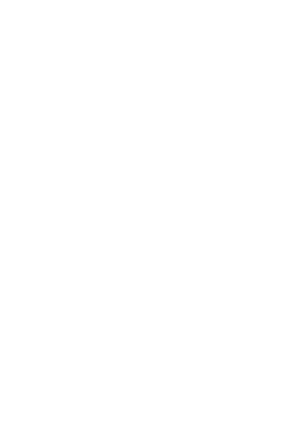
George Segal, Red Woman Acrobat Hanging from a Rope, 1996. Bronze with red patina, 88 x 41 x 20 cm. New York, The George and Helen Segal Foundation Inc.
107 Alexander Calder, Stabile
|
|
Acrobats, tightrope walkers and dancers
If our adventure begins with the arch of the foot, the study of anatomy and posture, at the end of it, we find circus acrobats, tightrope walkers and dancers: “L’homme, premier des primates à adapter la station debout, est aussi le premier des saltimbanques. Osant se dresser sur le sol, hésiter, s’il va avancer puis, sans trébucher, trouver son chemin sur deux pieds, il fut, parmi les mammifères, le premier funambule à parcourir le fil invisible de son existence. Là où les autres des son espèce, collés au sol, rampaient, sautillaient, claudiquaient, il se lança (Man, the first of the primates to stand upright, was also the first acrobat. Daring to stand on the ground, hesitating, then, moving on, without stumbling, he found his way on two feet and was, among mammals, the first wire-walker to follow the invisible thread of his existence. There, where others of his kind, glued to the ground, crawled, jumped, limped along, he leapt),” as Jean Clair wrote in 2004, comparing man’s first steps with walking on a wire, the wire-walker being a key figure for many famous artists
of the XIX and XX centuries. In works of art by Edgar Degas, Pablo Picasso and Paul Klee, along with others by Gino Severini and Fernand Léger, Georges Roualt and Alexander Calder, acrobats and tightrope walkers offer an alternative mythology to classical tradition, and figures assuming acrobatic, balancing poses, including the attitudes and arabesques of graceful dancers, are caught midway between an ape and angel in flight, somewhere between the orang-utan and Apollo of the Belvedere.
|
|
|
|
|
|
With this comparison, Clair paved the way to the main theme of this exhibition: the eternal pilgrimage of our species on Earth. Looking back, we can imagine the distance travelled by early man to today, count the steps our species has taken to move and survive, flee or reach a destination.
In this way, the work of artists paints a clearer picture of the evolution of our species, focusing on our feet, rather than the stomach, genitals or hands. The anatomy of our lower limbs, as they have specialised and changed shape since the early hominids, can be useful in helping us understand the fate of man and how he has distinguished himself on our planet. In the time before words and objects, steps in space and time were what separated us from other living things. As scientists report, it all began millions of years ago, when our ancestors began walking on the ground more or less erect. This was a decisive evolutionary development. The footprints of our African ancestors provide the necessary foundation for Paul Klee’s The Equilibrist, an icon of the creative and equally free movement at the start of the twentieth century, when the painter was entrusted with a riskridden duty. As they turned away from the world of perfect shapes, pleasing proportions, civilization living in perfect harmony with nature, artists could not help but imagine walking precariously on the edge of the void, drawing unpredictable trajectories with dissonant harmonies, like those in the music of Igor Stravinsky, with his The Rite of Spring and Arnold Schönberg with Pierrot lunaire.
|
|

|

|

|
The plumb line
In his autobiography, Salvatore Ferragamo writes how his primary concern was to find a way to help feet rest securely on the ground, to support them and allow the entire weight of the body to be released correctly on the ground. In order to do this, Ferragamo devoted countless hours to studying the mechanics of the foot, its anatomy and the scientific laws that regulate walking, the architecture of the skeletal system and the way muscles function, in order to understand how the arch of the foot works, the importance of the golden ratio and the distribution of weight between the centre of
the plantar arch and its extremities (heel and toes). Ferragamo gave great importance to the plumb line, a fundamental concept in classical and contemporary dance. Indeed, he personally gauged the golden point of his shoes using the appropriate instruments: like architects and the builders of cathedrals and triumphal arches, Ferragamo used the plumb line to confirm that the weight of the body fell on the right point, to keep the body aligned.
|
|

An exercise in balance: the sculpted F-shaped heel of the Arabesca in red suede and gold kidskin, 1944-1945, and patented after the war. Photo credit: Christopher Broadbent
|
|
|
|
|

|

|

|
Salvatore Ferragamo found the median line that can be drawn from the top of the body (the head) to the horizontal plane (the ground) where the bottom of the foot touches down. This vertical line between earth and sky is the axis of equilibrium that leads to the centre of the arch of the foot and vice versa. This reveals how Ferragamo the shoemaker followed methods similar to those of Medieval and Renaissance artists and architects, meaning, his knowledge of anatomy and the laws of physics, in relation to those of music and the cosmos, was indispensable to the achievement of formal perfection. Therefore, Ferragamo was interested in the mechanics of the foot, as he sensed that this was the basis for his clients’ wellbeing and physical - as well as mental - health. As a very young man in the United States, Salvatore took night classes in anatomy at the University of Southern California in Los Angeles because he was convinced that in-depth knowledge of the skeleton would help him create perfect shoes. “In my shoes, [my clients] told me, they felt differently. In mine they could walk without suffering, which is surely no more than the function of shoes. In my shoes they were happy”.
“It is not upon design, style, or handicraft but upon foot comfort that I have founded my fortune”.
|
|
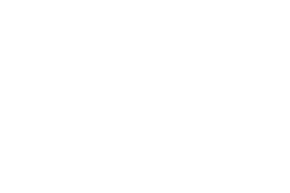
Development of a shoe last in 11 heel heights, 2014. Photo credit: Arrigo Coppitz
|
|
|
|
|
|
Exhibition path
First room. The first room of the exhibition is devoted to Salvatore Ferragamo’s research, his patents, the models he crafted in his search for the best fit and studies into the arch of the foot that enabled the shoemaker of dreams to develop methods similar to those used by architects and artists, as he ceaselessly searched for the ideal solution for perfect posture, the secret element that would unlock absolute comfort. This section includes the wooden lasts constructed for his famous clients and the anatomical plaster moulds of men’s and women’s feet that allowed Salvatore Ferragamo himself and, later, his company, to continue conducting research into the comfort of shoes. In addition to historical footage of Salvatore Ferragamo, this room shows an interview with his nephew, Jerry Ferragamo, who furthered his uncle’s studies into the fit of a shoe after his death.
Second room. Undoubtedly one of the exhibition’s most spectacular spaces, the second room takes visitors on a dizzying voyage through time from our ancestors’ earliest footprints in Africa, left roughly 3.6 million years ago, to 1969 when man repeated the same movement, taking his first step on the Moon. A selection of famous photographs by Eadweard Muybridge, a pioneer of portraiture with a keen interest in the study of motion will also be displayed: a child’s first steps, marching men, athletes in daring poses, dancers and animals standing on all fours. The images shown explore the concept of walking, moving on one’s feet and balancing. This was a fundamentally important theme in the figurative arts from the nineteenth century on, as artists began studying the first photographic images, which were used to explain the mechanics of motion, walking, running and jumping.
Third room. In this room, the theme of walking is explored. Works of art from various time periods are juxtaposed, each inspired by walking, balancing and moving from one place to another. Adriano Cecioni’s depiction of a child’s first steps, on loan from the Palazzo Pitti’s Galleria d’Arte Moderna, is compared with the Primi passi (First Steps) shoes that belonged to Ferruccio Ferragamo and put into practice the patent filed for a non-slip sole for children. The most iconic piece in the room is certainly Auguste Rodin’s Étude pour le Saint Jean-Baptiste, a sculpture of the prophet walking
through the desert. This great Parisian sculptor also created the well-known L’homme qui marche shown here; both pieces are generous loans from the Musée Rodin in Paris.
This section also includes a series of beautifully illustrated essays on anatomy dating back to the sixteenth and seventeenth centuries, like the volumes by Andrea Vesalio. Furthermore, an interest in foot anatomy can be seen in certain fragments of Ancient Roman sculptures, including the splendid Nike’s Foot, found in the Forum of Augustus, a rare example of sculpture in gilt bronze, which is paired in this exhibition with another highly evocative piece, the Étude de pied by Henri Matisse, a prestigious work of art on loan from the Hermitage in Saint Petersburg.
A number of other pieces in this room feature walking men who move forward on their feet and do not fall, by Mario Ceroli, Antony Gormley and Bruce Nauman. However, the spotlight shines on Marina Abramovic´ and Ulay’s legendary walk on the Great Wall of China.
A stunning loan from the Biblioteca Nazionale Centrale di Firenze, the National Library of Florence, is an edition of the Divine Comedy, illustrated with engravings by Sandro Botticelli, which will be replaced over the course of the exhibition with another two prestigious editions of the celebrated poem, which are some of the oldest known copies in the world. Fourth room and corridor. This section of the exhibition features an installation by Cecil Balmond, engineer, architect, artist and writer, whose work symbolises equilibrium in architecture throughout the entire exhibition. The artwork he has created specifically for this show is inspired by his reading
of Salvatore Ferragamo’s autobiography. In Emanuele Enria’s interview of Cecil Balmond featured in the film by Francesco Fei, the artists says, “The foot resembles an arch and is the most complex part of the body. The arch of a bridge, a Roman arch for example, is an extraordinary, yet static, construction, as it is purely in compression. On the other hand, the foot has three layers of counteracting
tension. The foot is like an orchestra of tension and compression. No architect could ever make a structure like that”.
Some of the artist’s projects are displayed in the corridor. For the inauguration of the exhibition and the first two weeks it is open, to complete the piece inside, in Piazza Santa Trinita, at the corner of via dei Tornabuoni, facing Palazzo Spini Feroni and the entrance to Museo Salvatore Ferragamo, Cecil Balmond will display the H_edge installation, metallic structures in equilibrium, which form a maze for visitors to enter. Balmond describes this piece as follows: “Our dreams have no defined shape. We occupy a strange forest. The chains sparkle like jewels, designed from a profound inner logic; H_edge embodies the concepts of everything and nothing, the infinite and the void, for a powerful holistic experience that expresses our affinity with space and form”.
Fifth room. This section includes an installation of exemplary walks from archive films. It is a kaleidoscopic montage of the world’s most influential leaders of the last two centuries: Benito Mussolini, Adolf Hitler, Winston Churchill, Josef Stalin, Mao Tse Tung, Mohandas Gandhi, Martin Luther King, Giovanni Paolo II, Fidel Castro, John F. Kennedy, Nelson Mandela, Queen Elisabeth II of England, Mother Theresa of Calcutta and Margaret Thatcher.
Sixth room. This room celebrates circus performers, acrobats and tightrope walkers, one of the preferred subjects of avant-garde artists from the early twentieth century to date, from Pablo Picasso to Gino Severini - who were inspired in their figurative creativity by a well-known engraving by Albrecht Dürer - to Paul Klee, Fernand Léger, Wassily Kandinsky, Marino Marini, Georges Rouault and Giulio Paolini. After the Twenties, artists turned away from figurative images but continued to explore the concept of balance, creating an abstract, geometric language in shapes and signs suspended in the air. This was true for Alexander Calder and Fausto Melotti.
Seventh room. A small cinema has been set up in which visitors may watch a video created by Francesco Fei for this exhibition, in which Emanuele Enria interviews Wanda Ferragamo on what was important to her husband, Salvatore Ferragamo, his passion for feet and his discoveries in relation to the plantar arch. The video also includes an interview with James Ferragamo, Salvatore’s grandson, who explains how the inestimable know-how that has been passed down is a precious gift to cultivate and safeguard. In the footage, well-known figures like mountaineer Reinhold Messner, tightrope walker Philippe Petit, the writer Will Self, the architect Cecil Balmond and the dancer Eleonora Abbagnato demonstrate how equilibrium lies at the heart of their experiences. From these interviews, we learn how the concept of balance is actually much more comprehensive than one would otherwise believe and how it is closely related to a balance of the mind.
In addition to the portraits of the people interviewed, Reinhold Messner’s shoes are displayed in this room, courtesy of the Reinhold Messner Archive in Bolzano, Italy.
Corridor. The corridor features frames from Francesco Fei’s video of Teatro Cango ? Cantieri Goldonetta in Florence, directed by internationally renowned choreographer Virgilio Sieni, the newly appointed director of the Venice Dance Biennale. In the video, Korean dancer Paul Lee performs a variation based on the teachings of Moshe Feldenkrais, one of the twentieth century’s most versatile figures, who combined his knowledge as an engineer and physicist with his experience as a martial arts teacher and researched, over the course of his entire life, how we acquire the motor skills with which we move and act, founding a spiritual and physical education discipline.
Eighth room. In this room, visitors find a video installation by Bill Viola, one of the biggest names in contemporary art, known around the world for having experimented with the expressive potential of video and sound. His work shown here, Inner Passage (2013), is dedicated to the English artist Richard Long, undisputed father of Land Art and famous for the artwork he has made by walking in deserts and landscapes.
While walking, Long makes art using the things he finds and collects along the way, like stones, earth and pieces of wood, which he arranges in perfect geometric patterns. In particular, Bill Viola’s video shows a young man walking in a straight line from a distant point on the horizon towards the objective. Eventually the walker comes so close to the observer that he becomes part of the observer’s perceptions and perspective, sharing information and memories collected on his walk (and life).
Ninth room. Before the entrance to the ninth room, the theme of dance is introduced in the Third Room by a Classical relief of Dancing Maenads, which inspired many artists, from Raffaello to Canova and Luigi Bienaimé whose work is compared.
Perhaps the most magical room in the entire exhibition is the ninth. In the centre of an acrobat by George Segal, one of the most important artists in the American Pop Art movement.
Around the acrobat, Marino Marini’s sculpted dancers and Pericle Fazzini’s sculpture dance. Works of art dating back to the nineteenth and twentieth centuries by Edgar Degas, Plinio Nomellini, Auguste Rodin and Antoine Bourdelle are displayed on the walls. Later, artists began portraying the body in the abstract, breaking it down to highly expressive signs, as can be seen in the pieces by Julio González, in which the body of a dancer is still recognisable, and then in Joan Miró’s lyrical creativity.
The Biblioteca Nazionale Centrale di Firenze has partnered with Museo Salvatore Ferragamo for this room as well, with a prestigious loan: one of the panels for the interludes of the play La Pellegrina, painted in the sixteenth century by Bernardo Buontalenti, a key figure in the history of dance.
Finally, the exhibition would not be complete without a nod to Salvatore Ferragamo’s creativity, which can be found in the patent for dancing shoes, displayed here with two completed versions of the shoes, revealing the shoemaker’s passion for equilibrium.
|
|
|
|
|
|
|


